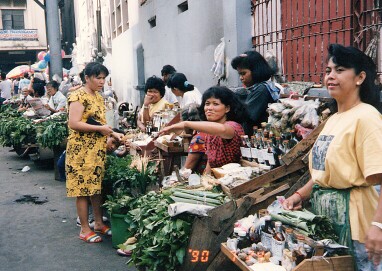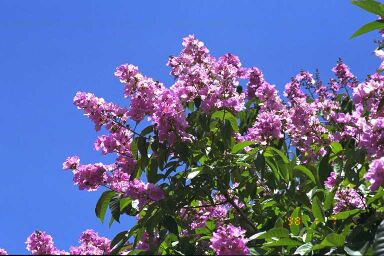
| return |
1. Preface
Philippinos can speak English fluently because
they learn English from primary school. So,
many people go abroad (USA, Australia etc) for further study after
the graduation. To avoid the outflow of brain, the Philippine
government established the Consortium system, and try to get Ph.D.
in their own countrry. It constituts from 3 Universities, UP,
Ateneo and De La salle to share one graduate school. In January
1984, I was requested to give lecture for the first batch of the
chemistry students of the Consortium.
Since it was the first time for me to
give lecture in English, and the politic situation was not stable,
I hesitated. But the curiosity and interest to visit Foreign country
overcame the hesitation. The main host was Fr.
Samson.
The lecture was harder than I imagined, because the Academic level
of the six students (all female!)
were very high, and I had to add many items to my prepared lecturenote.
Since they were strictly selected from all over the Philippins,
their Chemistry and English levels were excellent, and probably
I learned more than they did
from me. On this occasion, I made acquaintance with Dr.
Fabian Dayrit of Ateneo de Manila University and Dr.
William Padolina of University of the Philippines at Los Banos.
Dr. Padolina promoted to the president of Department of Science
and Technology.
2. Phillipine Policy on the Medicinal
Plants
As the Government policy, at the primary health care, simple medication should be depend on herbal medicine grown abondantly in the Philippines partly because of the economical reasons. There is no need to use expensive antibiotics because it reduce the National interest. There are many "Herborario" in provinces, and they use traditional and/or secret herbal medicines from the field. In the City centre of Manila, there is a big market of herbal medicines (in front of Quiapo Church, Photo). The Philippine goverment is promoting a project of screening these herbal medicines and selection of the significantly effective medicines are in progress. We got many information from the above two scientists who are the members of this project.
3. Collaborative Study through Students
Agnes Rimando from UP (University of the Philippines) joined
our lab in 1985 as the first foreign student for me, and studied
on Ehretia microphylla (Boraginaceae). She isolated rosmarinic
acid as an effective anti-allergic substance, but she did not
stay longer because of linguistic problem. What she is now
JSPS funded our collaborative project on "Search for effective
constituents of Philippine medicinal plants" (1985-1987 and
1990-1992). I visited seven times to Philippines for 90 days in total, giving
lectures and discussions. I was impressed
to see the vast campus of University of the Philippines at Los
Banos (UPLB) with many botanical gardens
(Campus map)and Jungles.
We worked mainly on anti-allergic and antidiabetic activity in
Philippine medicinal plants. During the period of this project,
two students joined our lab. Lourdes Simpol
worked on anti-allergic principles
from Boraginaceae plants and got PhD on 1993. Teresita
Martin worked on Tinospora rumphii (Menispermaceae), isolated
and characterized
many diterpenes and got PhD on 1997.
4. Search for Antidiabetic Substances
We have been successful to established in
vitro method for screening for hypoglycemic drugs by measuring
glucose transporter activity using cultured cell systems.
Using the above screening system, several herbal medicines obtained
at the Quiapo market were tested. Among 23 species, only six samples
showed the positive activity on glucose transporter. One of them
is BANABA, Lagerstroemia
speciosa which has long been used
for antidiabetic traditional medicine.
5. Antidiabetic principles of BANABA
Banaba (Lagerstroemia speciosa )
belongs to Lythraceae and is fairly common in the Philippines
and other South Asian countries. It is sometimes used for avenue
trees for the beautiful flowers (photo). From the MeOH extract
of the leaves of this plant, bioassay-guided fractionation afforded
active fraction, and from this fraction two triterpenoids, corosolic
acid and maslinic acid (Figure) were isolated. Measurement of
the activity of each compounds led to the conclusion that only
corosolic acid is active. It enhanced the glucose transporter
activity level by 27% at the concentration of 1 mM. (See Recent Publications, #1, 1993)
Although we found this active substance through in vitro
test, it was already tested in vivo by Italian group to
show hypoglycemic activity in experimental animal (rat).
6. Recent results
We are still looking for some more active substances in Banaba, since the activity of corosolic acid is not enough to explain all of the activity of the MeOH extract of Banaba. Recently, we found stronger active substances from the leaves extract. They are ellagitannins, ie. lagestroemin, flosin B and reginin A. (See Recent Publication #39, 2002)